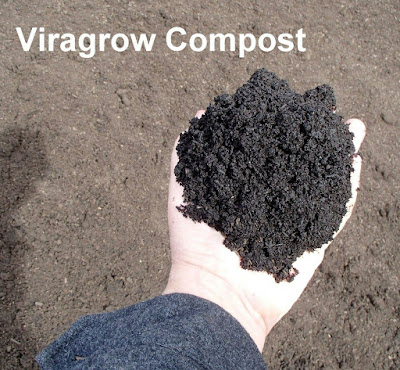 |
| This bottlebrush is yellowing because it surrounded by rock mulch and planted in native, desert soil. |
A. Leaf yellowing can be caused by many different things.
With bottlebrush, it is frequently a shortage of available iron to new growth. More
importantly, the soil is collapsing resulting in poor drainage and not enough
air reaching the roots.
I see
this often when any bottlebrush is surrounded by rock mulch. Over time, the
soil around the roots becomes mineralized. In my opinion, all bottlebrush
plants, in general, should not be
surrounded with rock covering the soil.
 |
| This is an example of an iron fertilizer that dissolves in water that can be sprayed on plants with yellow leaves. |
Once
leaf yellowing due to a shortage of available iron, it cannot be reversed quickly
by adding soil amendments. The most immediate color leaf reversal would be
spraying the leaves multiple times, a few days apart, with an iron solution.
But the yellowing will return to new growth as the iron runs out.
Adding
an iron fertilizer to the soil, such as an iron chelate, lasts longer, up to
about 1 year. It is added in early spring, about now. But the next year you
need to add more iron chelate to the soil, before new growth begins.
But when
iron is added to the soil, the leaves which are yellow remain yellow. Green
leaf color only occurs in new growth which hides the yellow leaves until they
drop off. To turn yellow leaves green again requires a spraying the plant with
the iron solution I mentioned earlier.
For the
long-term, you must improve the soil where the plant is growing so that the
alkalinity of the soil is reduced, and the roots have better access to air.
This can be done by adding compost to a soil that has become mineralized and
covering the soil with wood chips rather than rock.
When
preparing a spray solution that contains iron, follow the label directions. But
I suggest using either distilled or reverse osmosis water rather than tap
water. This is because of the alkalinity in our tap water. In distilled or RO (reverse osmosis) water this alkalinity is removed. I am concerned that the alkalinity in tapwater
might interfere with the effectiveness of your iron sprays.
I would
also include something to make the spray solution “wetter”. In a pinch you can
use a liquid dishwashing detergent but it’s not ideal since it contains so many
additives such as hand lotions and perfumes. It’s better to use a liquid
detergent which is purer such as Dr. Bonners or a detergent made from Castile
soap.
 |
| This is a liquid detergent, aka surfactant, that I use and purchase online. Notice that it is unscented and it is also certified as organic through Oregon Tilth. |
 |
| This is another surfactant that I like which is made out of saponins or agave extract that can assist fertilizers dissolved in water to move inside the leaf through the surface. |
Both the
purified water and liquid detergent is important because it helps move the iron
contained in the solution through the leaf surface and inside the leaf .
Spray
the leaves long enough so that the spray solution begins running off its
surface. Spray both the upper and lower surfaces of leaves so that the sprayer
is taken inside the plant more effectively.


No comments:
Post a Comment